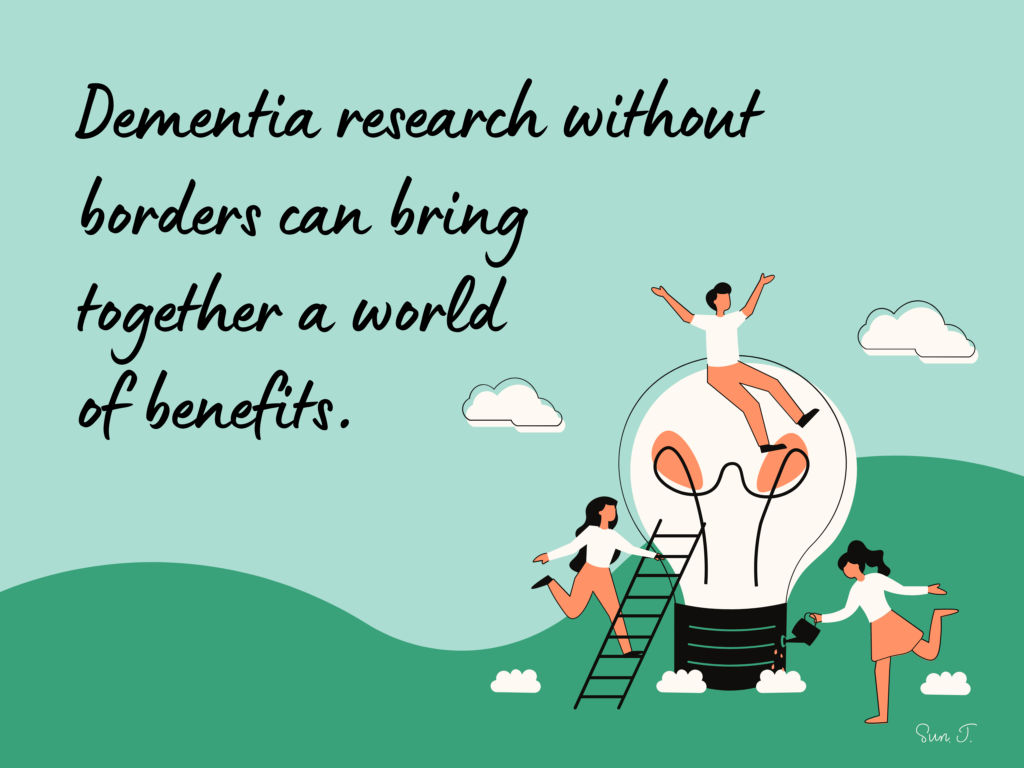
A decade ago, I undertook a research project that looked at what factors helped people positively adapt to entering an aged care facility. During this time,I came across a literature review on design and dementia. At the same time, I was working and providing care to residents living with dementia in Australia, which provided me with insights into how dementia enabling environments can make a difference to the quality of life of a resident living with dementia. Dementia enabling environments are built environments that are inclusive and can enabling with designs that support the quality of life and care of the individual. When I returned to Singapore in 2011, it was clear that the country was facing an ageing population with approximately 82,000 older adults living with dementia. Environments that are inclusive for Singaporeans living with dementia were needed. But there was a gap; there were no validated culturally sensitive assessment tools for dementia enabling environments. Recommendations and resources were available, however, without scientific validation, there was no means of assuring that the tools were evidence-based and aligned with international best practice.
Getting started: keeping the person in front of mind.
It was easy to get lost in the thick of things with a range of environmental assessment tools available in the space of dementia. On hindsight, one tool set itself apart from the rest, focusing on a salutogenic, person-centred and principles-based approach, the Australian Environmental Audit Tool-High Care. The EAT was a tool of choice, with distinct alignment with person-centered care, which is a crucial component in dementia-specific interventions (WHO, 2012).
International cross-cultural adaptations: Recognising the evidence and working towards international collaboration
In seeking to develop an assessment tool for Singapore, creating an assessment tool from the ground up may not practical. The development of a rigorous tool would require a large amount of funding, human resources and time. Whilst the tool may be culturally appropriate, it will not be aligned with international best-practice and cannot be comparable with other countries and cultures. Creating a new tool with the knowledge of an existing validated tool, ruling out the possibility of cultural adaptation invalidates three decades of research behind the EAT-HC (Fleming & Bowles, 1987; Fleming, Zeisel, & Bennett, 2020). Therefore, the feasible option would be to uncover if there is a possibility for adaptation. If so, I needed to find out what cultural sensitivities are specific to the Singaporean population that may not be evident in the EAT-HC.

The study: A sequential qualitative-quantitative mixed-method design
The study consisted of two stages, a development stage and a testing stage. I carried out a scoping review to uncover the existence of a salutogenic environmental assessment tool and in the absence of a tool, the adaptation potential of the EAT-HC in East and Southeast Asia. The results found that no suitable validated salutogenic tool was available, and the EAT-HC had considerable potential for adaption. To hone down to Singapore and working to understand the cultural sensitivities required in dementia enabling environments, I held focus group discussions with 150 participants . The study yielded new knowledge with participants requesting high-care environments that can incorporate technology, distinctly familiar Singaporean design characteristics palliative care spaces and spaces that allowed for spiritual reflection. Recommendations from participants include the need for nursing homes to take on the built environment of Housing Board Development Flats, which is home to approximately 80 percent of the population. High-density, vertical living was noted to be familiar for participants, with some participants citing that they are comfortable sharing a bedroom with one or two individuals, as many are currently doing so in their own home. “Kopithiam” or South East Asian style coffee shops were also a familiar social and activity space for residents. After two rounds of testing, the results found the newly adapted Singapore Environmental Assessment Tool to be valid, reliable and culturally sensitive (Sun & Fleming, in press). Education and training for staff remain critical components in the effective use of the tool. A knowledge-to-action framework enables users to ensure the tool’s sustainability within different aged care organisations.
Dementia research without borders can bring a world of benefits.
The adaptation process has yielded several benefits for Singaporeans living with dementia, their caregivers, aged care workers, researchers and policymakers. The study produced a validated environmental assessment tool for Singaporeans living with dementia in facilities providing high levels of care that aligns with international best-practice recommendations. The knowledge brought about through the use of the tool can increase awareness and understanding of dementia enabling environments for Singaporean users. A validated tool allows aged care workers and policymakers to have a national and international means of evaluation to assess local facilities. Lastly, researchers from diverse cultures looking to adapt an environmental assessment tool may use this study as a point of reference. Research without borders can bring a world of benefits, such as in the case of this study. In the space of environmental design, we can all learn from each other and that shared knowledge to create environments that recognises person-centred care and can meet the needs of people living with dementia in different countries and cultures.

Joanna Sun is a PhD candidate with the University of Wollongong and a social media coordinator at the Wicking Dementia Research and Education Centre. Her research focuses on the development of a built environmental assessment tool for people living with dementia Singapore. Joanna has developed an environmental assessment tool for facilities providing high levels of care for people living with dementia in Singapore. Her research interest lies in the understanding of the influence of the built environment and how technology can reduce isolation and enhance social connectivity, education and engagement for people living with dementia and their families.
Twitter: @Design4agedcare




